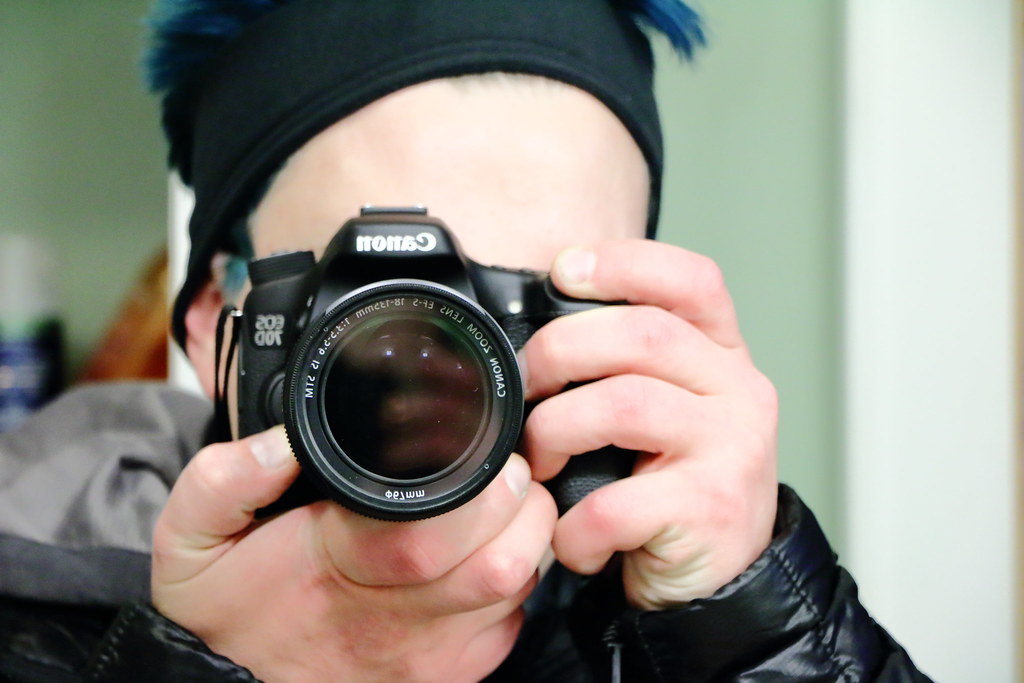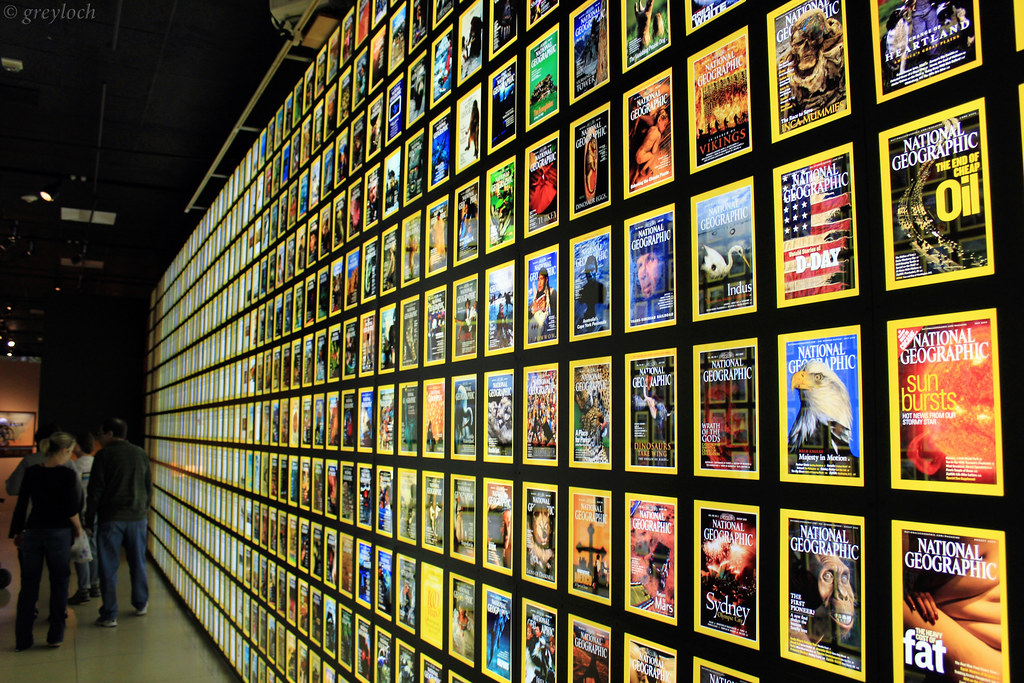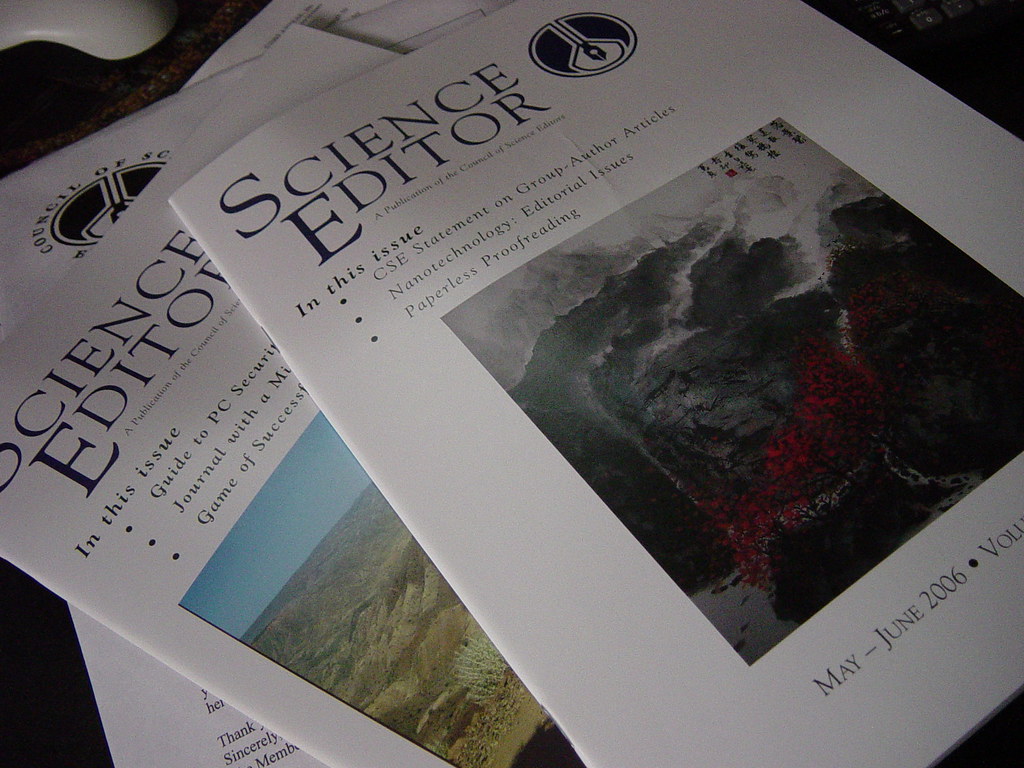
In the vibrant and competitive world of photography, securing a feature in a major magazine is more than just a fleeting moment of glory; it’s a strategic move that can profoundly elevate your career, establish your authority, and solidify your brand. Forget the ephemeral likes and comments of social media; a magazine feature bestows upon you a level of credibility, trustworthiness, and expert recognition that is both enduring and invaluable.
Imagine the impact of seeing your name and stunning images gracing the pages of a respected publication, a tangible testament to your skill and vision. This isn’t about ego; it’s about smart business. As Nielsen highlights, earned media, like magazine features, is an astonishing 92% more trusted than advertising. This trust translates directly into client confidence, increased inquiries, and ultimately, greater revenue for your photography business.
This article isn’t just a collection of ideas; it’s your definitive Lifehacker-style guide to mastering the art of magazine publication. We’re here to break down the process into 12 actionable steps, giving you the practical, direct, and empowering insights you need to get your work noticed, published, and celebrated. Let’s dive in and unlock the secrets to positioning yourself as the authority in your photographic niche.

1. **Curate a Magazine-Ready Portfolio**
Before you even think about submitting your work, the absolute first step is to ensure your photography is truly ready for prime time. This means going beyond simply having ‘good’ images; it requires a meticulous curation process that showcases only your absolute best, most impactful work. A lot of people rush getting their work out there even when they’re not ready yet, and that’s a common pitfall to avoid.
Remember that you need to have good images if you want to get noticed. Otherwise, viewers will just ignore them. Your portfolio isn’t just a collection; it’s a narrative, a visual statement of your unique style and vision. It should include a diverse range of high-quality images that collectively tell a story or demonstrate your expertise in a particular area, leaving no doubt about your capabilities.
What’s crucial is how you present your subject in the picture. Is the composition precise? Does the light illuminate your shot the way you want it? Does the photograph have a lot of visual interest? These are the questions editors will ask. Your portfolio should answer them with a resounding ‘yes’ every time. Focus on creating a cohesive body of work that not only captures attention but also builds your credibility as a photographer, making it clear you’re ready for publication.
This consistent, polished presentation extends to the technical aspects too. While you don’t have to create National Geographic quality photos all the time, even simple images can get a lot of recognition if they are impeccably presented. Ruthlessly cull any irrelevant photographs that are long past their ‘use by’ date, ensuring that every photograph contains a deeper story or is an important piece in the jigsaw of your final collection. A strong, cohesive portfolio is your most powerful calling card.

2. **Understand Your Creative Voice and Brand**
Beyond just having stunning photos, magazines are increasingly looking for photographers with a clear artistic vision and a strong, consistent brand identity. This means understanding who you are as a creative, what you stand for, and, most importantly, your ‘why.’ Your creative voice is all about finding and communicating this underlying purpose behind your work.
Magazines are more likely to feature photographers who have a clear artistic vision and identity, an understanding of who they are, and clarity around what they are communicating. This isn’t about fleeting trends; it’s about developing a unique style that resonates and offers a distinct perspective. If you haven’t found this consistency within your work yet, you aren’t ready to be featured in your favourite magazines, and that’s okay – it’s a journey.
Before you even think about submitting your work to a publication, make sure your photography reflects your unique style and brand vision. Publications, especially online blogs and magazines with bigger audiences like Martha Stewart Weddings, are looking for cohesive, polished work that tells a story – a story that is inherently yours. This clarity in your brand vision will also empower you to choose the right publications, avoiding wasted time on submissions to outlets that don’t align with your identity.
Your creative voice is all about finding and communicating your all-important ‘why’. Editors and curators want to know what your work stands for, what causes you’re fighting for, or what deeper meaning you bring beyond just beautiful imagery. This journey to unearth your creative voice is long and arduous, but it’s essential. Making friends with your journal and honing your writing skills can be incredibly beneficial in articulating this ‘why,’ which in turn will generate more compelling ideas for features.
Read more about: The Essential 12: Ironclad Contract Clauses Every Influencer and Brand Needs to Know

3. **Research and Target the Right Magazines**
One of the most critical steps in securing a magazine feature is to meticulously research and identify the publications that are the perfect fit for your photography. Not all magazines are created equal, and each has its own niche, style, and target audience. Generic submissions are often ignored; targeted, thoughtful submissions get noticed.
Start by researching magazines that align with the genre of your photography. Whether you specialize in nature, fashion, or travel, finding magazines that feature your type of work increases your chances of acceptance. This means really digging into their past issues, understanding their aesthetic, and discerning what kind of stories and visuals they typically publish.
Beyond general alignment, consider the specific nuances of their audience. Tailoring your submissions to fit the magazine’s style and audience is crucial for successful publication. Ask yourself: “Would my ideal client be impressed to see me in this magazine?” If the answer is yes, it’s absolutely worth targeting. This thought process helps you identify not just any magazine, but the *right* magazines for your strategic growth.
The best PR for photographers comes from credible publications that your clients actually read and respect. This might include national and industry magazines for prestige and SEO power, local lifestyle magazines to build authority in your market and attract high-intent local clients, or specialized niche magazines (like wedding, portrait, boudoir, fashion) that reinforce your specific niche and attract your dream clients. Look for local publications too; they are often an accessible entry point to getting published and can provide valuable exposure within your community.
Read more about: Redefining Defense: The 500 kW Laser and the Global Surge in High-Energy Weaponry Development

4. **Develop a Compelling Narrative (Story)**
Here’s the biggest mistake photographers make when pitching to magazines: they assume editors only care about images. In reality, editors care about stories. A stunning photograph is powerful, but a stunning photograph embedded within a compelling narrative is irresistible. Your role is not just to capture moments, but to weave them into a coherent and engaging story.
This means framing your work as a story worth telling. A wedding shoot isn’t just photos—it’s a narrative about the couple, the venue, and the style that came together to create their special day. A portrait session isn’t just headshots—it’s a transformation story, perhaps from nervousness to confident self-expression, capturing the essence of an individual’s journey. Even a boudoir shoot isn’t just glamour; it’s about empowerment, self-expression, and personal growth.
Your PR campaign for photographers has to frame your work as a story worth telling. When you pitch, lead with the narrative and back it up with visuals. Provide context, explain the inspiration, describe the challenges overcome, and highlight the unique elements that make your series of photos compelling. This approach shifts your submission from a mere portfolio showcase to an editorial feature, something an editor can immediately envision on their pages.
Thinking narratively also helps you identify new angles and opportunities for publication. Instead of just submitting a gallery of beautiful images, you’re offering a complete package – a visually rich story that adds depth and engagement for the magazine’s readership. This problem-solving approach to an editor’s constant need for fresh, engaging content sets you apart from the crowd.

5. **Master Effective Communication**
One of the most important and so often overlooked skills as a photographer is communication. We often choose the camera as our primary tool for communicating with the world, but in this digital landscape, great photography is simply not enough. Editors, curators, and potential clients need to hear your voice, understand your vision, and connect with your story in words as well as images.
There are millions of photographs hitting our screens every day. It is arrogant to believe that your work is just going to get spotted by that important someone scouring the Internet on their mobile phone. Sadly, most people are scrolling to pass the time, mustering just about enough energy to mindlessly double-tap before moving on to the next post. To truly get noticed, you need to actively engage and communicate.
Most magazine features are going to want to include some form of writing for greater context around the photographs they feature, so it is essential that you work hard to refine your writing skills, as well as striving to master the craft of photography. Those who can photograph well and write well become real powerhouses in the creative world and will quickly win the favour of editors of leading magazines for the strength and diversity of features they offer.
This goes beyond just writing eloquently. It’s about learning to effectively communicate with curators, editors, podcast hosts, and business owners. It means being able to tell them who you are, what you do, and, more importantly, why you do it. Opportunities aren’t just going to come your way; you have to go out and get them by communicating your passion and purpose clearly and concisely.
Read more about: The F-22 Raptor’s Resurgence: A Deep Dive into America’s Evolving Stealth Super Fighter

6. **Adhere to Submission Guidelines (and Stand Out)**
Every magazine, whether it’s a national powerhouse or a local lifestyle publication, operates with a specific set of submission rules. Adhering to these guidelines is not just a suggestion; it’s a non-negotiable requirement that demonstrates your professionalism and respect for their process. Failure to follow them can result in your submission being rejected outright, regardless of the quality of your work.
Each magazine has its own set of submission guidelines for publishing photos. These guidelines typically include specifics on image resolution, file formats, and the number of photos you can submit. They’ll also often detail requirements for captions, vendor credits, and the contextual information needed. Make sure to read and understand these requirements for each magazine you approach, ensuring every detail is meticulously followed.
However, strict compliance doesn’t mean sacrificing creativity. While following guidelines gets you considered, a clear, creative story gets you chosen. Editors receive dozens of submissions daily, so standing out requires a dual approach: flawless execution of the submission rules coupled with an irresistible narrative and a compelling pitch note that explains why your story matters to their readership.
Submit in the correct format, file size, and style. Provide all necessary captions, vendor credits, and context without being asked. Then, add a compelling pitch note that explains why the story matters, why it’s a perfect fit for their specific publication, and what unique value it offers their audience. This blend of diligent adherence and creative distinction is your winning formula for getting noticed and published.
Now that you’ve meticulously prepared your portfolio, defined your brand, researched your targets, and crafted your stories, it’s time to shift gears. This next phase is all about active engagement – cultivating connections, amplifying your reach, and intelligently maximizing the impact of every feature you secure. It’s about building a robust, long-term strategy that transforms single successes into sustained growth and undeniable authority.

7. **Build Relationships with Editors and Industry Professionals**
Getting published in a major magazine is rarely a one-off transaction; it’s the culmination of cultivating valuable relationships. Building connections with industry professionals, especially editors and curators, can significantly enhance your chances of not just landing a feature, but of achieving sustained publication. This isn’t about fleeting networking events, but about genuine engagement that fosters trust and mutual respect over time.
To truly make these connections, you need to be proactive and strategic. Start by attending photography events, both online and in person, and consider joining professional organizations that align with your niche. These are prime opportunities to connect with magazine editors, art directors, and fellow photographers. Platforms like LinkedIn also serve as powerful tools for initial outreach and maintaining professional contacts, allowing you to follow their work and engage thoughtfully.
Once you’ve made a connection, nurturing it is key. Don’t just pitch and disappear. Engage with their content on social media, leaving thoughtful comments and sharing posts that resonate with your own professional interests. Following up politely after submissions, whether accepted or declined, reinforces your professionalism and keeps you on their radar. Consistency in these small gestures demonstrates commitment and a long-term vision.
Over time, this consistent engagement allows you to transition from being an unknown photographer to a familiar, trusted contributor. This level of recognition often leads to more consistent features, as editors will increasingly see you as a reliable source of high-quality, story-driven content. Furthermore, these relationships can provide invaluable insights into the publishing process, industry trends, and may even lead to direct referrals or recommendations for future opportunities.
Read more about: Mastering the Fundamentals: 10 Essential Business Principles for Aspiring Entrepreneurs and Established Leaders

8. **Harness the Power of Social Media and Photo Sharing Networks**
In today’s digital landscape, social media platforms are indispensable tools for both showcasing your work and strategically connecting with publications. These aren’t just spaces for casual sharing; they are powerful engines for building your brand, reaching a massive audience, and actively attracting the attention of magazine editors and potential clients alike. Leveraging them effectively is a non-negotiable step in your publication journey.
To make the most of these platforms, a multi-pronged approach is best. Utilize giants like Instagram, Facebook, Twitter, and LinkedIn to share your high-quality images. Always pair your visuals with engaging captions, relevant hashtags, and perhaps even behind-the-scenes glimpses. Critically, don’t just post – engage. Respond to comments, interact with other creatives, and proactively tag magazines or editors in your posts when relevant. This direct interaction can significantly increase visibility and open doors to publication opportunities.
Beyond the major social networks, specialized photo-sharing platforms like Flickr, 500px, and Behance offer unique advantages. Sites like 500px and Flickr are excellent for receiving feedback and networking with other photographers, while Behance provides a more professional platform to showcase curated bodies of work. These platforms often cater to a more discerning audience, and if your images are compelling and consistently high-quality, you have better chances of gaining exposure and even attracting new clients directly.
Remember, social media offers you an audience of billions; it’s a vast pool of potential clients and influential industry contacts. While passive scrolling might be the norm for many, your goal is active engagement. Don’t assume your work will simply be discovered; actively communicate your passion and purpose. By strategically using these networks, you transform them into powerful tools for both portfolio display and dynamic networking, making your path to publication more direct and impactful.
Read more about: Beyond the Road: Unpacking the Complex Journey of EV Battery Recycling and Its Future

9. **Strategically Enter Photography Contests and Projects**
For many photographers, participating in contests and undertaking unique photo projects might seem like a secondary pursuit, but they are, in fact, incredibly effective strategies for gaining recognition and getting your work directly in front of magazine editors. These avenues provide structured opportunities to elevate your profile, test your skills, and make a significant splash beyond traditional submissions.
Entering photography contests is a surefire way to get noticed and can lead to invaluable exposure. Numerous reputable competitions exist, and identifying the right ones is crucial. Always prioritize contests that align with your specific genre or specialty; for instance, if you excel in portraiture, focus on portrait contests rather than wildlife. Before submitting, meticulously read the terms and conditions, paying close attention to image rights, as some may demand broad usage without reimbursement. Sites like Picter, LensCulture, and Life Framer are excellent platforms for discovering reputable opportunities.
Even if you don’t win every time – which is a normal part of the process – the act of entering itself provides benefits. It forces you to refine your best work, pushing you to create truly noteworthy images. Judges, who are often industry professionals or editors, will notice exceptional talent, even if it takes time for the recognition to materialize. Patience and persistence are your greatest allies here; your work will eventually garner the attention it deserves if its quality is consistent.
Beyond contests, embracing innovative photo projects offers another powerful path to visibility. Thinking outside the box with your creative work significantly increases your chances of standing out. Consider developing a unique series or a themed body of work that demonstrates a particular skill or perspective. These projects can be shared on prominent photography websites and blogs, such as PetaPixel, Gizmondo, SLRLounge, or Expert Photography, which are constantly seeking fresh and exciting content.
By undertaking and promoting these projects, you don’t just share captivating photos; you showcase your diverse skills, teaching abilities, and expert status in the field. When your name appears in the byline of such features, it serves as direct promotion, attracting new followers to your social media and, critically, gaining new clients. This combination of creative initiative and strategic dissemination can profoundly elevate your perceived expertise and broaden your audience.
Read more about: Unlock Your Best Self: 12 Essential Habits for Peak Physical Health and Lasting Well-being

10. **Cultivate an Authoritative Online Presence Through Blogging**
If you’re looking to significantly amplify your online visibility and establish yourself as an authority in the photography world, running a photography blog is an incredibly potent strategy. In a crowded digital space, a blog is more than just a place to share images; it’s a dynamic platform for thought leadership, expert instruction, and consistent discovery. It allows you to control your narrative and offer invaluable context around your photographic work.
The primary reason to invest in a photography blog is simple: discoverability. The more quality articles you publish, the higher the likelihood that people will find you online through search engines like Google. When your blog discusses interesting and relevant topics that resonate with your target audience, your articles will frequently appear in search results, directly leading more people to discover your website and, consequently, your stunning photography.
Your blog doesn’t need to be an all-consuming endeavor requiring daily, in-depth technical manuals. Even sharing simple tutorials, behind-the-scenes snapshots from your shoots, or reflective pieces on your creative process can be profoundly beneficial. The key is to provide value, sharing insights and experiences that others can learn from. If you genuinely believe people can benefit from what you have to say, then it’s absolutely worth sharing.
Consider the success story of Expert Photography, which began as a simple blog just a few years ago. By consistently adding quality articles online, it gained traction and transformed into one of the most successful photography websites. This demonstrates the immense power of content creation; a well-maintained blog can steadily build your reputation and audience over time, positioning you as an indispensable resource in your niche.
Moreover, a blog actively contributes to mastering effective communication – a critical skill for photographers. Most magazine features will want some form of accompanying writing to provide greater context for your photographs. By honing your writing skills through blogging, you become a dual threat: a skilled photographer and an articulate communicator. Those who can photograph well and write well become true powerhouses, quickly winning the favor of leading magazine editors who value the strength and diversity of features they offer.
Read more about: 10 Proven Strategies to Increase Your Online Following in 2025: Your Blueprint for Digital Dominance

11. **Leverage Your Features for Maximum ROI**
Securing a feature in a major magazine is an incredible achievement, but the real strategic power lies in how you leverage that publication for maximum return on investment (ROI). Simply getting published is only half the battle; the true impact unfolds when you strategically integrate that earned media across all your marketing channels. This transforms a single moment of recognition into a long-term asset that continually builds authority, drives conversions, and generates revenue for your photography business.
Start by prominently showcasing your features on your most vital digital real estate. Add magazine logos and direct links to your published articles on your homepage, ‘About’ page, and any dedicated ‘Press’ or ‘Features’ sections of your website. This immediately establishes credibility for new visitors. Within your pricing guides or client welcome packets, include “As Featured In” badges. This preemptively builds trust and positions you as an expert even before potential clients have their first direct interaction with you, influencing their perception and increasing their confidence in your services.
Don’t overlook the power of local visibility. Upload magazine covers and articles to your Google Business Profile. This not only bolsters your local SEO but also provides tangible proof of your authority when clients search for photographers in your area. Extend this credibility to every outbound communication: update your email signature to include a simple line like “Featured in [Magazine Name]”. Suddenly, every email you send becomes a subtle, yet powerful, credibility touchpoint that reinforces your published status.
Social media platforms, too, become fertile ground for leveraging your features. Beyond a simple announcement, share behind-the-scenes stories about the shoot or the process of getting published. This not only reinforces your authority but also creates engaging content that invites your audience to celebrate your success with you. This continuous cycle of sharing and engagement ensures that the buzz around your feature lasts far beyond its initial publication date, transforming it into a PR asset that keeps delivering ROI for years to come.
Ultimately, while photographers often perceive PR as an intangible benefit, the data unequivocally demonstrates its direct correlation to revenue. Earned media, such as magazine features, is astonishingly 92% more trusted than advertising. This trust translates directly into higher conversion rates, more qualified inquiries, and ultimately, greater bookings and revenue. A single, strategically leveraged feature can do more for your business than thousands of dollars spent on advertising, creating an evergreen authority that pays dividends repeatedly.
Read more about: The F-22 Raptor’s Resurgence: A Deep Dive into America’s Evolving Stealth Super Fighter

12. **Embrace Persistence, Professionalism, and a Long-Term Strategy**
The journey to sustained magazine publication is rarely a straight line; it’s often characterized by twists, turns, and the inevitable occasional rejection. Persistence, therefore, is not merely a desirable trait—it is absolutely key. Rejections are a normal, even expected, part of the process, and allowing them to discourage you is a fast track to missed opportunities. Instead, view each “no” as a learning experience, an opportunity to refine your approach, and a badge of honor for having the courage to try.
Alongside persistence, maintaining unwavering professionalism in all your interactions is paramount. This means being courteous, responsive, and reliable in every communication with editors, curators, and publishers. A positive, professional attitude leaves a lasting impression, increasing the likelihood of future opportunities, even if a current submission isn’t successful. People in this industry value trust and reliability, and demonstrating these qualities consistently will set you apart.
The real magic happens when you shift your mindset from chasing one-off wins to building a consistent, long-term PR strategy for photographers. Think of publication not as a singular event, but as an ongoing system that compounds your authority over time. Start by setting quarterly PR goals, aiming to be featured in at least one publication – whether it’s a local lifestyle magazine, a niche industry outlet, or national press. This systematic approach ensures continuous effort and measurable progress.
To sustain this strategy, consider batching your pitches, aligning them with seasonal themes, upcoming events, or new creative projects. Editors appreciate timely and relevant stories, and a well-planned calendar can significantly increase your success rate. Moreover, explore creating partnerships with local vendors such as venues, planners, or florists, and pitch joint submissions; shared PR efforts not only increase your chances but also provide valuable backlinks and amplified authority for everyone involved.
By diversifying the types of publications you target – mixing local authority with industry-specific credibility – you maximize your impact. Crucially, measure your results by tracking inquiries, bookings, and any conversion lifts directly tied to your PR features. This data-driven approach allows you to prove the ROI of your efforts and continually refine your strategy for even greater success. When PR becomes a robust system, it consistently fuels your visibility, enhances your SEO authority, and drives significant revenue for your photography business.
Read more about: 14 Timeless Boomer Truths That Woke Millennials Are Now Embracing (And Why)
In the exhilarating world of photography, seeing your work grace the pages of a major magazine is more than just a momentary thrill; it’s a profound validation, a powerful business asset, and a transformative step in your artistic journey. This guide has laid out a clear path, empowering you with actionable strategies to move beyond aspiration to tangible achievement. By meticulously curating your vision, forging meaningful connections, and strategically amplifying every success, you’re not just seeking recognition—you’re building an enduring legacy. This isn’t about hoping for fleeting likes; it’s about claiming your rightful place as an authoritative voice, turning passion into profit, and ensuring your incredible work inspires generations to come. The only question now is: are you ready to write your next chapter in print?



